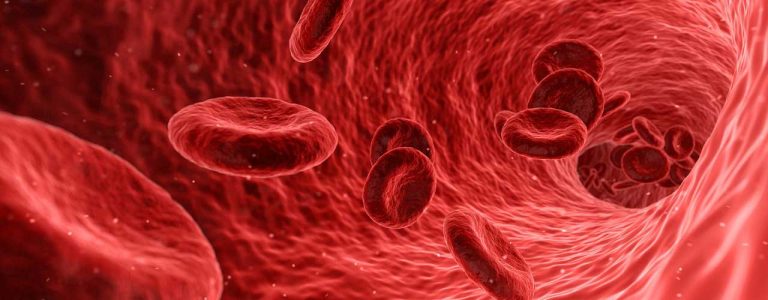What Is Methamphetamine?
Methamphetamine, often referred to colloquially as ‘meth’, ‘speed’, or ‘crystal’, is a white crystalline powder. It is categorized by the DEA (Drug Enforcement Administration) as a Schedule II controlled substance.
Methods of consumption include smoking, injecting, swallowing, snorting, or vaporizing. It may come in tablet, liquid, or solid form. Meth use poses serious health risks.
Meth increases dopamine which is the body’s ‘feel good chemical’ resulting in a short-lived euphoria. The body releasing dopamine at high levels may result in an especially potent ‘low’, a feeling of depression.
A desire to experience the high again and relieve withdrawal symptoms may result in further drug abuse and meth addiction. Methamphetamine abuse may result in physical dependence.
Methamphetamine is an illicit drug except in the case of Desoxyn. This drug is a form of prescription methamphetamine used to treat extreme cases of Attention Deficit Hyperactivity Disorder. However, legal meth is rarely prescribed due to the effectiveness of other prescription amphetamines such as Adderall.
The communities affected by methamphetamine abuse often have high levels of criminality, unemployment, child neglect, and abuse cases. Meth often consumes the individual’s life so they become dysfunctional and unable to care for themselves, their loved ones, or their community.
Find help: Orange County Rehabs
How Does Methamphetamine Work?
Methamphetamines work by increasing the amount of dopamine present in the synaptic gap. The increased levels of this ‘feel good’ neurotransmitter leads to pleasurable symptoms such as euphoria. During a ‘rush’, blood pressure is increased as well as heart rate and libido creating a false sense of well-being.
The drug affects the nervous system, spinal cord, and brain cells. The method of consumption impacts how long its effects will be experienced. Snorting or injecting meth will result almost instantly but its effects will be short-lived compared to oral consumption.
The effects of meth usually last between four and eight hours, however, its residual effects can last up to twelve hours. The half-life of meth is 10 hours on average.
Is Adderall Meth?
Adderall is a combination prescription drug. Its two primary active ingredients are amphetamine and dextroamphetamine. It is mostly used to treat ADHD (Attention Deficit Hyperactivity Disorder).
The prescription amphetamines treat ADHD by managing undesirable symptoms like inattention, impulsivity, and hyperactivity. The central nervous system stimulants in Adderall increase focus and improve energy levels while decreasing restlessness.
Adderall is also FDA-approved for treating sleep disorders such as narcolepsy as it excites the central nervous system leading to increased energy.
Although it is a prescription medication intended for legitimate medical use, people abuse Adderall to boost productivity or lengthen waking hours. Like other stimulant drugs, Adderall may also be misused as a ‘party drug’.
How Does Adderall Work?
Adderall and other amphetamines are central nervous system stimulants. There are two types of Adderall tablets, immediate-release or time-release. The latter offers a preventative measure against overdose and drug abuse as it will not immediately impact the body.
To manage attention deficit hyperactivity disorder (ADHD), the levels of dopamine and norepinephrine are increased, enabling the individual to concentrate more easily.
Comparing Adderall and Meth
Both Adderall and meth use may lead to stimulant use disorder. This is a form of substance use disorder in which drugs are abused in order to trigger the brain’s reward system into releasing dopamine, the body’s ‘feel good’ chemical. The central nervous system is excited, manifesting in increased energy.
The communities affected by meth abuse often have high levels of criminality, unemployment, child neglect, and abuse cases. Meth often consumes the individual’s life so they become dysfunctional and unable to care for themselves, their loved ones, or their community.
Similarities of Meth and Adderall
Both meth and Adderall share similar side effects which are especially exacerbated in cases of misuse including:
- Blurry vision
- Chest pain or discomfort
- Development of a stimulant use disorder
- Discolored urine (dark or cloudy)
- Dizziness
- Faintness
- Fever
- Headache
- Insomnia
- Muscle spasms, pain, stiffness, or cramps
- Physical dependence on drugs
- Rapid or irregular heart rate.
- Respiratory distress
- Swelling of the feet or lower legs
- Tremors
- Uncontrolled vocal outbursts and tics
- Unusual or excessive tiredness
- Weakness
You should seek advice from a medical professional if you experience any of these symptoms.
More emergent side effects that meth and Adderall share include:
- Sudden cardiac arrest
- Seizures
- Sudden loss of consciousness
If you experience one of these symptoms, please contact emergency services by calling 911.
Addiction
Both of these drugs are Schedule II controlled substances; although they have legitimate medical uses, these drugs pose addiction risks. Abuse of any drug can result in increased tolerance. This means a person must take more of a drug to feel its effects. They may experience stimulant withdrawal or a depressive ‘low’ upon quitting.
Withdrawal Symptoms
The following symptoms of withdrawal may occur when a physical dependence on either Adderall or meth has developed:
- Anxiety
- Concentration problems
- Depression
- Fatigue
- Increased appetite
- Insomnia or hypersomnia
- Irritability
- Suicidal thoughts
Overdose
An overdose is when a dangerous dose of a drug has been consumed. It can have lethal consequences.
Signs of an overdose of either of these drugs include:
- Agitation
- Chest pain
- Struggle to breathe
- Hallucinations
- Seizures
Overdose symptoms vary from person to person. If you suspect you or someone you know is experiencing an overdose, you should seek immediate medical assistance.
Differences Between Methamphetamine and Adderall
Methamphetamine may be a chemical cousin of Adderall but it exhibits some chemical differences. For example, meth contains an additional chemical group called methyl. The methyl group contains a carbon atom and three hydrogen atoms. This extra chemical group allows the drug to cross the blood-brain barrier faster than the amphetamine drug within Adderall.
The production methods of meth and Adderall vary greatly. Although prescription methamphetamines may be manufactured in a similar environment to other amphetamines, street meth is usually made in clandestine labs. These ‘meth labs’ may be unsanitary environments with a high risk of contamination.
When sold as a recreational street drug, meth is likely to be ‘cut’ with other drugs or substances, unlike Adderall which is extremely pure when manufactured by medical professionals. Drugs intended for legitimate medical use are carefully measured and prescribed in appropriate quantities as a preventative measure against addiction.
Some side effects are exclusive to methamphetamines such as ‘meth mouth’ which refers to dental issues as a consequence of meth abuse.
The legal consequences of using methamphetamines can be extremely damning. For example, possession of 5 grams or less could result in a $1000 fine. Other punitive measures for methamphetamine possession, production, or distribution include incarceration and major fines.
How Can Cornerstone Socal Help?
Substance use disorders are mental illnesses. Whether abusing a prescription medication like Adderall or an illicit drug like meth, it is vital that you seek addiction treatment.
At Cornerstone Socal, our behavioral health professionals can help you recognize and heal, from not only your Adderall and meth addiction but also any associated mental health issues. We understand drug addiction often co-occurs with mental health problems. Therefore, we believe it is important to address both problems within your addiction treatment.
Cornerstone Socal is a safe space to heal. The client is at the center of their recovery journey; therefore, we ensure our treatment plans are individualized to ensure the best outcomes.
We offer a variety of care levels including:
- Group therapy
- Inpatient drug rehab
- Medication-assisted treatment
- One-to-one therapy
- Relapse prevention therapy
- Day treatment
- Intensive outpatient program
Contact us today to begin your recovery journey.






